You may be familiar with project management, but when it comes to the basic question of “what is a project,” it can sometimes be more difficult to specifically define. Understanding what a project is and entails is critical to move your operation toward growth and project success.
Projects can take on many different forms, from software development to launching a new website or working on constructing a building from scratch. Each project has its own unique needs, there are basic project requirements that can be applied across the board.
To help you meet your project goals, it’s essential to go back to basics and understand what a project really is. This post will look at the core elements of a project, including different project types, how to manage them the right way, examples, and how software like monday work management can improve project management.
What is a project?
A project is a group of tasks and subtasks that need to be completed to arrive at a goal.
Oftentimes, these project tasks need to be completed in a specific order, and they usually have a predetermined timeline that dictates a project’s pace.
Projects involve a team and specific members, like a project manager (PM), whose role is to plan, delegate, and oversee tasks and project progress within their team. This person is in charge of making sure the project meets its goals and the business’s overall mission. For example, an organization’s goal for a project could be to get more conversions, launch a company website, update existing apps or features, or deliver a new product to clients.
What are important elements of a project?
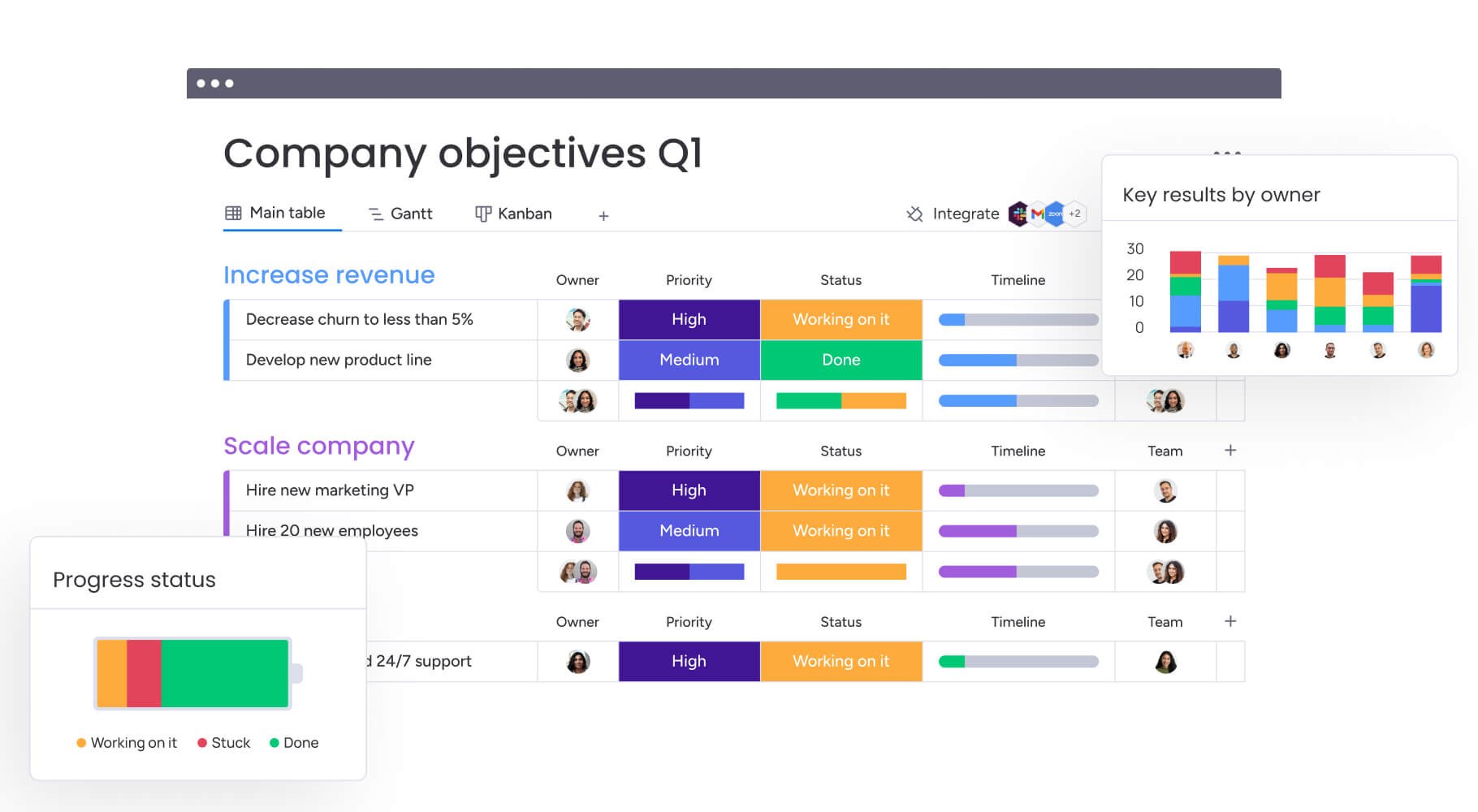
There are specific traits that set projects apart from other work tasks that may not meet the scope of a full project. While the goals and outcomes of each project will look different, even within the same team and company, most projects include many of the same elements, such as the ones below.
- Goals: These are desired outcomes to be achieved over a predefined time. Teams should work on establishing SMART goals for their projects, which could look like “launch the beta version of an app by March 10th”
- Tasks: Tasks are the project activities that are assigned to team members who must complete them before their deadlines
- Timelines: Timelines indicate clear start and end dates for individual tasks and help project managers visualize a project in its entirety
- Milestones: Milestones are important events along a project’s timeline and are used to monitor progress and key deliverables, such as securing funding, meeting stakeholder expectations, or entering the testing phase for a new app.
- Resources: Project resources cover anything a company needs to deliver a project, including manpower, money, supplies, software, project management tools, and more
- Deliverables: A deliverable is what gets produced during a project, which can be reports, content, products, apps, a single feature in an app, or any item that a client has asked for
- Budget: Budgets include the total cost of a project and are usually set from the get-go for teams to try and stick to as they collect resources and provide deliverables
- Stakeholders: Stakeholders are individuals who are involved in a project and could include anyone from internal team members like project owners and team members to external stakeholders like contractors and suppliers
- Acceptance criteria: Acceptance criteria are the project details and conditions that a project must meet for a client to accept an outcome, for example, a mobile app in development has to work with iOS and Android devices
Once all of these elements have been defined, they are compiled to form a project plan. The plan then acts as a guide for project control and execution.
Get startedDifferent types of projects
It’s tricky to categorize every type of project that exists in set categories since projects can take on many different forms depending on your industry. Still, to better understand the wide range of project styles and how they can differ and compare, let’s take a look at some different types of projects.
- Software projects: Developing new software or delivering updates on existing software
- Manufacturing projects: Manufacturing physical products from scratch
- Construction projects: Building a structure for a specific purpose
- Business projects: Launching a new business or aspect of a business
- Marketing projects: Developing and executing campaigns to promote a brand, product, or service
- Educational projects: Creating programs, courses, or materials to facilitate learning
- Event planning projects: Organizing events like conferences, weddings, or product launches
- Research and development projects: Investigating new ideas, technologies, or processes to solve specific problems
Pro tip: want to automate your projects with AI? Check out our new AI-powered project management features.
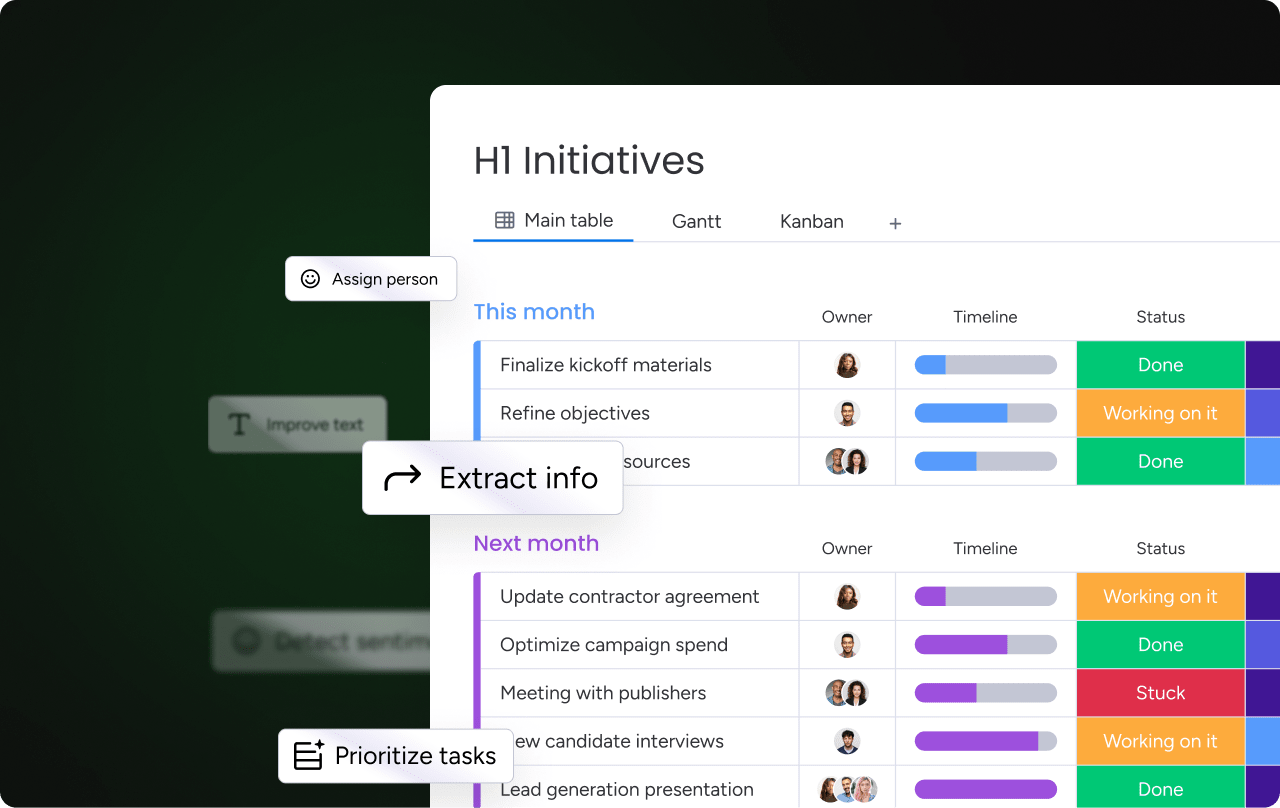
How do you manage a project successfully?
Managing a project is by no means easy. A single misstep can lead to missed deadlines. In fact, only 34% of organizations say they mostly or always deliver projects on time. So, how can teams effectively manage a project from start to finish while coordinating individual tasks and keeping things on schedule?
The process of planning projects and leading teams toward successful project completion is known as project management. While each team can define a successful project in its own way, here are 5 tips for successful project management:
1. Proper planning
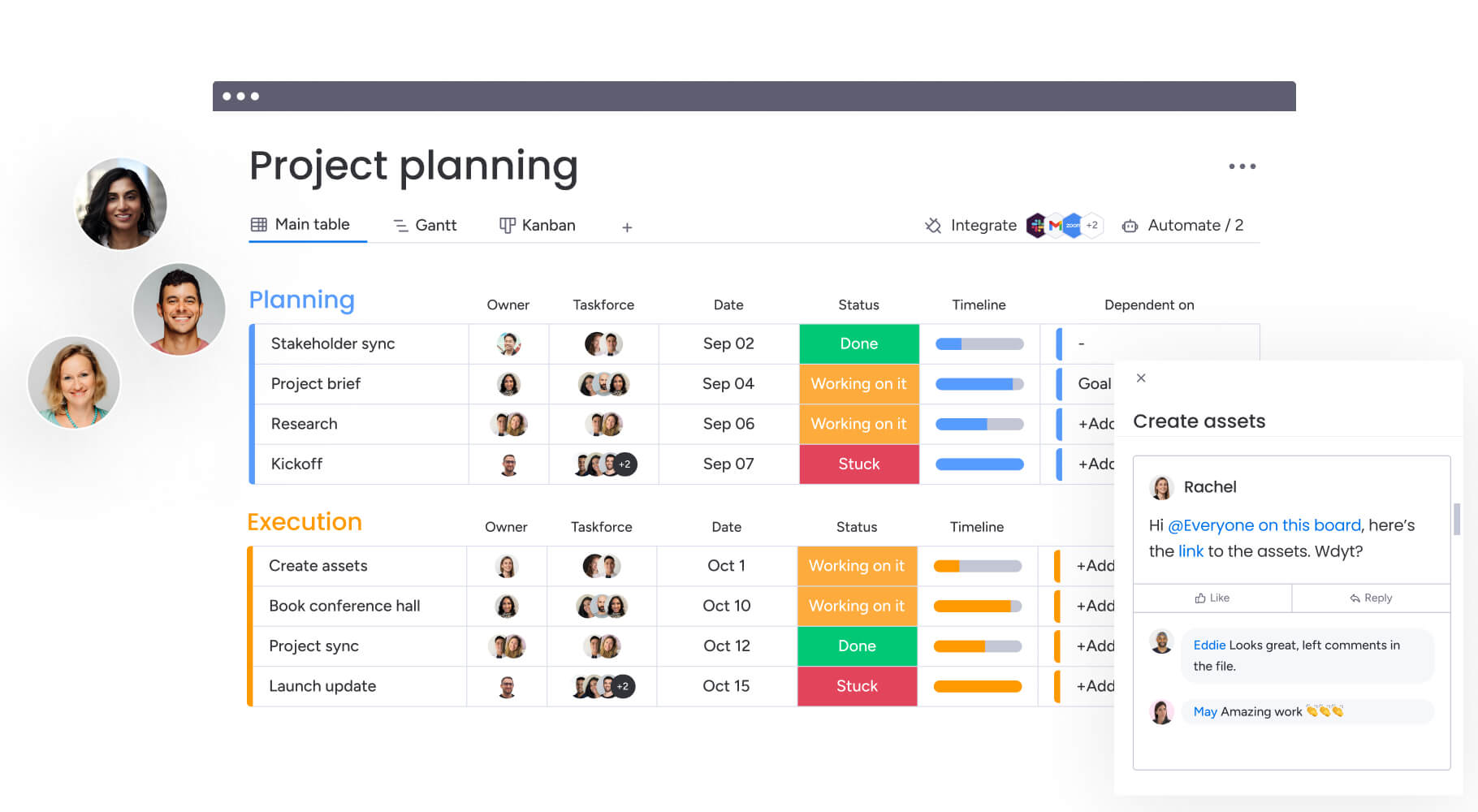
A vital part of the project management process is to build a project plan that helps the team meet their objective as efficiently as possible. PMs need to pick the right project management methodology, give their team the right tools, and keep an eye on the project budget and potential risks.
A good project plan involves a degree of flexibility (depending on your chosen project management methodology) since priorities can change once a project begins.
2. Pick the right team members
Managers must pick the right team members to perform critical roles in a project. This could mean choosing a specific employee to finish a significant task, choosing team members to be in charge of a particular project planning phase who have the right technical skills, or in general, assigning tasks to the right people.
3. Clear communication
For a project manager, good communication means everyone on your team has a clear idea of project objectives, progress, tasks, and any project-related updates. Creating a project communication plan is a good way to outline how team members should communicate with each other effectively. A software that centralizes all work-related communication, like monday work management, is ideal for this.
Get started4. Use milestones to track progress
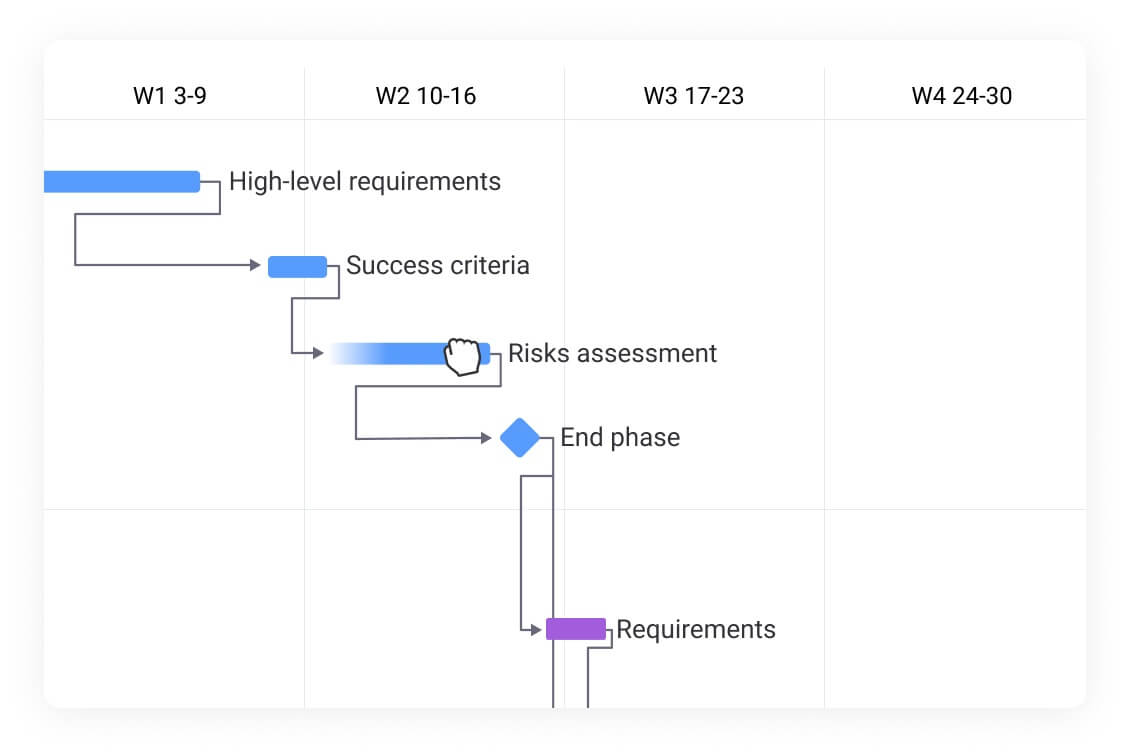
Milestones are indicators of project progress. When teams reach project milestones on time, it indicates that your project team is on track. Missed or delayed milestones indicate that managers and project team leaders need to re-evaluate key elements to identify and solve any issues.
5. Evaluate performance and make changes
Real-time data on Key Performance Indicators (KPIs) is crucial for project control. KPIs in project management are generally related to timeline, budget, quality, and effectiveness. Approximately half of surveyed project managers didn’t have access to real-time project KPIs. PMs need to use software that provides real-time project data and KPI reporting so they can identify and solve issues promptly.
What are some project examples?
Projects come in all shapes and sizes and can vary from short ones that span a week or two to longer ones that can take years. To give you a better idea of what projects look like, here are some examples of projects that different teams can work on:
- Video game development: Designing and developing an interactive game for consoles, PCs, or mobile devices, involving coding, artwork, and sound design
- Residential construction: Building a single-family home, including planning, securing permits, and managing contractors
- Tech product launch: Creating and marketing a new tech gadget, from prototype design to release
- Mobile app development: Developing a fitness-tracking app with features like activity monitoring and personalized coaching
- Corporate event planning: Organizing a corporate seminar, including venue booking, speaker coordination, and attendee registration
- Research project: Conducting a study on renewable energy efficiency, compiling findings, and publishing results
- Community garden: Designing and establishing a sustainable urban garden for local residents
- Film production: Producing a short film, including scriptwriting, casting, filming, and post-production editing
Project terms you should know
It’s essential to understand certain commonly used project management terms. These terms can help you clarify responsibilities, expectations, and progress through a project lifecycle. Here are a few terms that are critical to understanding how projects flow.
Project scope
A project scope defines strategic objectives, deliverables, and project boundaries. It’s used to outline what’s included and what’s not to help teams avoid scope creep. When a project’s scope is clear, all team members are working towards the same business goal to better manage time and resource availability.
Project stakeholder
A project stakeholder is any individual or group that’s affected by a project or its outcome. This can include clients, team members, contractors, suppliers, and a project sponsor. It’s important to identify stakeholders early on to address their needs and expectations. Stakeholder satisfaction is also usually a main goal for a project’s outcomes to be accepted.
Project deliverables
Deliverables refer to the tangible or intangible outputs of a project, which can refer to project reports, prototypes, or the finished product or result. Tracking deliverables is important to make sure that progress is aligned with a project’s overall goals at regular intervals.
Project milestones
Milestones are a part of a project timeline and signify specific project phases or achievements. Marking milestones can help teams and project managers track progress to keep the project schedule on track.
Project framework vs project methodology: What’s the difference?
It’s easy to get confused between a project framework and methodology and to understand which one you need for your project and when. While similar, frameworks and methodologies serve different purposes and it’s important to understand the role of each in project planning and management.
A project framework maps out standardized processes, tools, and templates you’ll need to manage a project from start to finish. Think of it as a set of instructions that your team will follow to achieve a specific outcome. It usually consists of 3 elements: project life cycle, project control cycle, and tools and templates.
On the other hand, a project methodology is the set of principles you’ll follow to manage a project. It’s more strict and formal than a project management framework. For example, in the Agile project management methodology, projects are delivered incrementally, which is a core tenant that teams need to follow to stick with a selected method so that a project progresses according to plan. A project methodology helps project managers to manage the project work and facilitate team collaboration.
What’s similar between the two is that both frameworks and methodologies help teams ensure projects are completed within constraints of time and without going over budget or running into major issues.
How monday work management helps you manage projects
Project frameworks and methodologies provide tried-and-tested guidelines for managing a project. However, this alone isn’t enough. You need project management software to organize your work and keep your team on top of various tasks. monday work management is a powerful platform with an intuitive user interface that makes it easy for you to plan, manage, and track your projects in one place.
monday work management facilitates collaboration across entire teams, whether you’re working on an individual project or multiple, helping reduce tedious manual tasks and eliminate back-and-forth emails for stronger project streamlining. Here’s a look at some of the best project management features the platform offers.
Collaborative and customizable boards
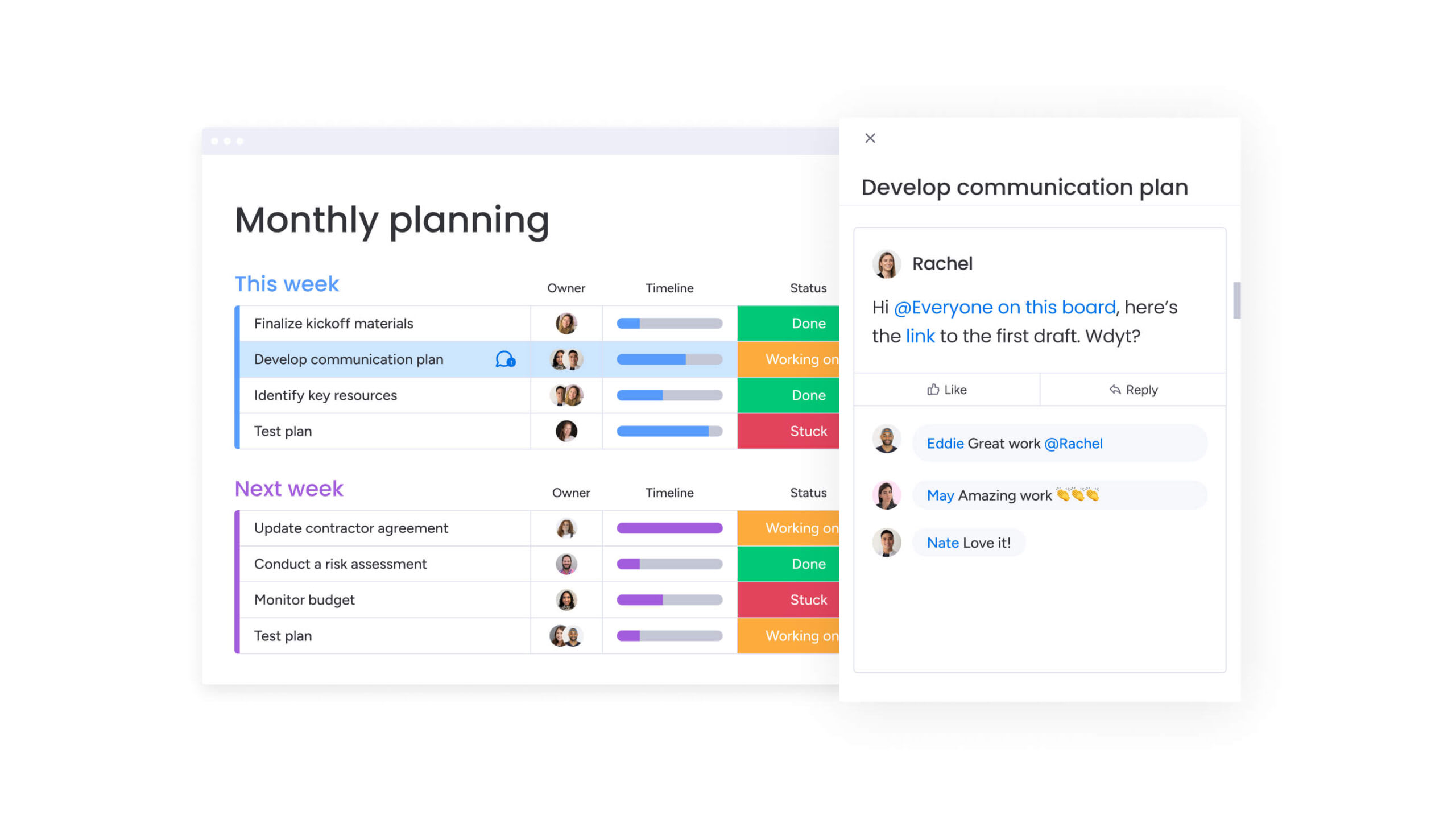
With monday work management, you can choose from hundreds of board templates that fit your project management methodology. Boards can then be customized to your liking and used to collaborate in real time by assigning responsibilities, sharing comments and updates, attaching documents, and more.
Visualize work your way
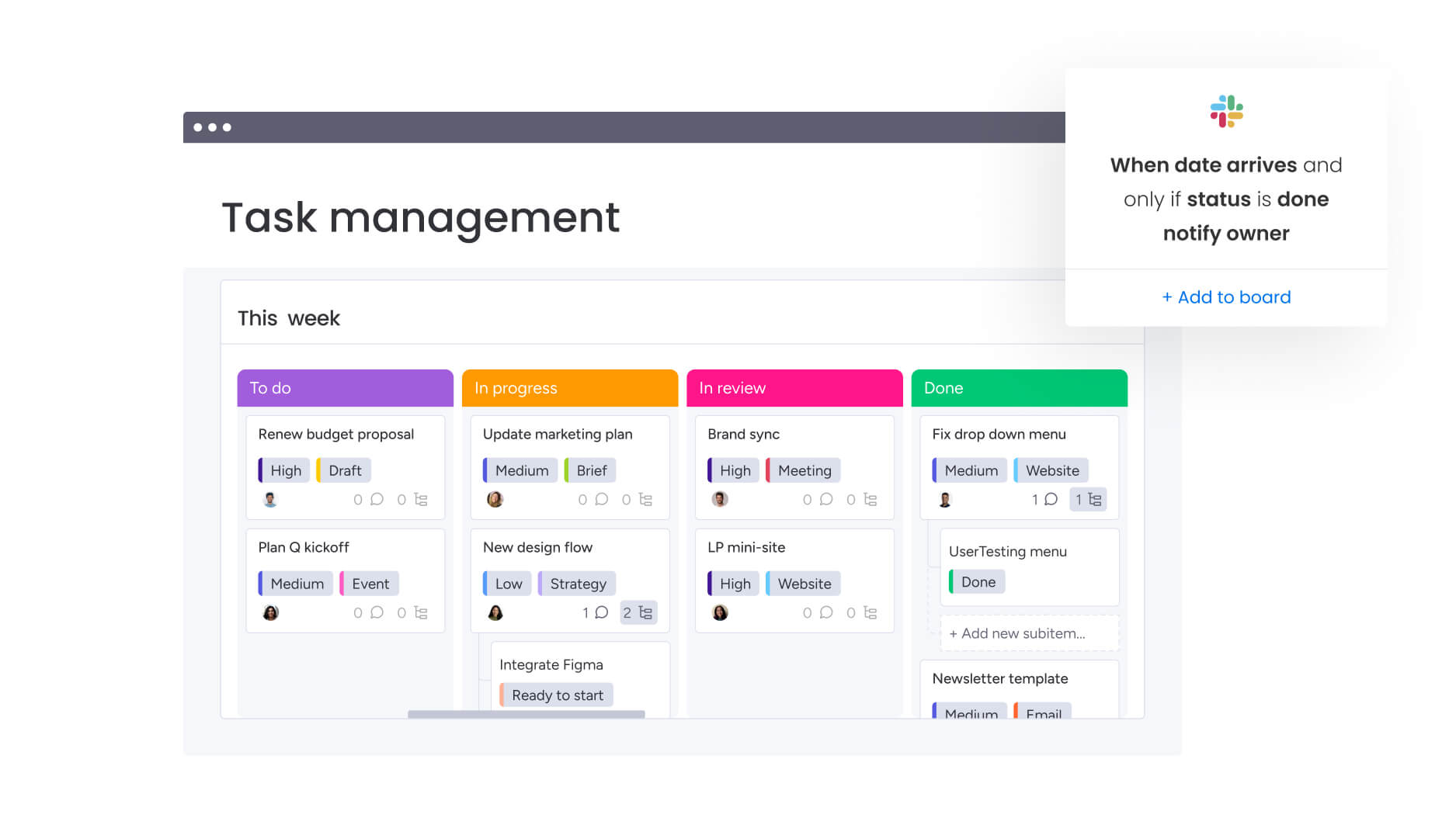
With over 27 different project visualization options including Kanban, Gantt, Timeline, Calendar, and more, you can visualize and monitor project progress exactly how you want to. This allows you to tailor the monday work management platform to the specific project management methodology of your choosing.
Track project progress at a glance
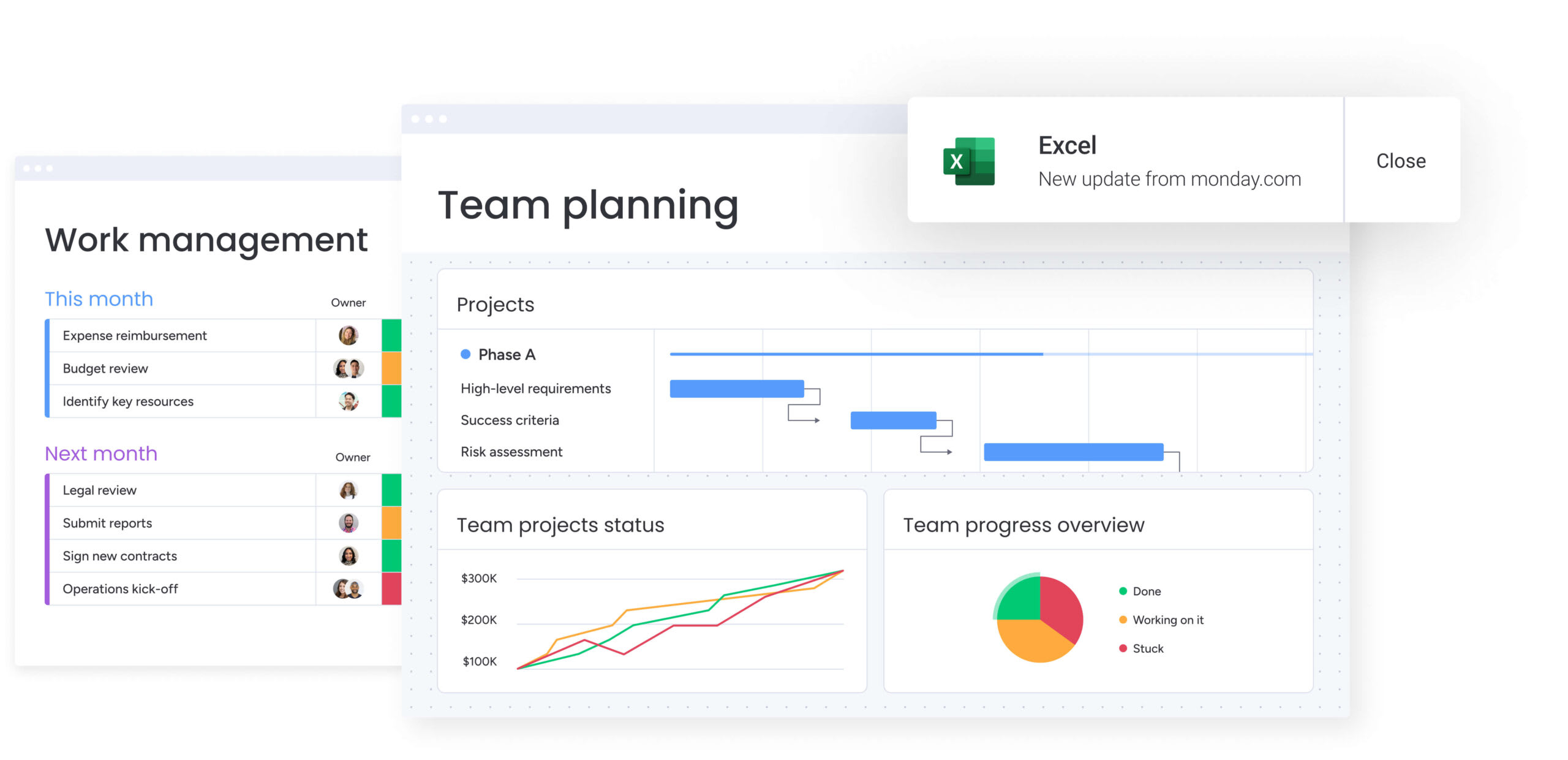
monday work management allows you to view dashboards that collect all your essential project data in one place, giving you an overview of how your team and projects are progressing. Additionally, you can pull essential insights through reports and analytics to see what’s working and what project processes can be improved.
Get startedImprove project management with the right solution
No matter what type of project you’re working on, whether it’s building new software or planning a large-scale event, having the right tools at your disposal will ensure your team can work together smoothly towards a common goal. Solutions like monday work management take the guesswork out of project planning and execution and empower you to make the right decisions at the right time so that your current and future projects have the greatest chance of success.
FAQs
What are the 5 main characteristics of a project?
There are many characteristics that define a project, but five main ones that every project should have, including: they have a clear set of activities, they include a deadline, they deliver a result, they have clear goals, and they’re unique.
What is not a project?
Many work tasks and activities may feel like projects but aren’t, such as ongoing tasks without an update, maintaining existing assets like a website, or repetitive events like monitoring marketing campaigns.
What are the three C's of a project?
The three C’s of project management include communication, collaboration, and cooperation, which are essential pillars of all successful projects.
Don’t miss more quality content!


